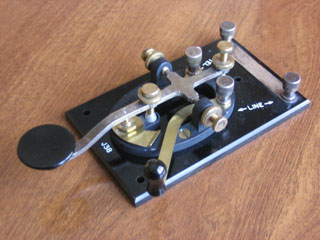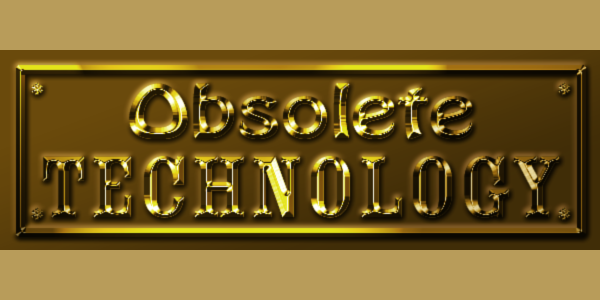There was a time not that long ago when Morse code was all around us. Boy Scouts learned it, pilots and sailors were required to use it, and of course everyone still knows the familiar term SOS which does not stand for “save our ships” but actually derives from the dot-dot-dot,dash-dash-dash,dot-dot-dot of its Morse code designation. Morse code once formed the backbone of all our long-distance telecommunications.
A little bit of the history of Morse code
Morse code, of course, refers to Samuel Morse, who invented the electric telegraph. Morse had a simple, revolutionary idea: to send the simplest possible signal over a single, long wire. His code was very simple, and was quickly expanded upon by Alfred Vail and others to the code we know today.

Here’s how it works. A telegraph key is a simple switch. Press it, and it triggers something at the other end. In the earliest days this was either a pin mark on paper or an audible “clack.” Either way, all communication was reduced to long clacks, short clacks, and the time in between them. The hardware required to send telegraphs led to the invention of switches and relays, both critical parts of every electronic device today. Without the telegraph, the computer could not exist.
Most people know about Morse code but do not know that it was designed to be fast — the most commonly used letters have the shortest codes, with “E,” the most common letter in English, being a single dot.
What most of us don’t think about is that originally, Morse code was encoded and translated completely by humans. It was up to a team of operators to quickly encode a message and send it. Once received on the other end, an operator either wrote it down or translated it instantaneously in their heads.
The versatility of Morse code
Morse code is versatile and can be transmitted over almost any electric medium. It can be created with blinking lights — Los Angeles’ famous Capitol Records building flashes “Hollywood” in Morse Code from its top light — sounds, radio waves, pretty much any form of electricity or energy can be used.
Here’s the words “The Solid Signal Blog” in Morse Code. The “/” character represents a long pause which would indicate a new word when a telegraph operator was receiving a message.
…. . / … — .-.. .. -.. / … .. –. -. .- .-.. / -… .-.. — –.
Here’s the same thing in sound form. This isn’t the way an original Morse operator would hear it, though. The ability for a machine to make a “beep” didn’t come until decades after the Telegraph was invented.
When the world ran on Morse code
In its heyday between roughly 1850 and 1920, Morse code was the wonder of the day. Telegraphs were everywhere and they were used far more frequently than telephones for important business. It was like e-mail: a letter could be sent across the world in mere minutes and compared to 2-3 weeks for the postal service. Skilled operators were well-paid and could send messages very quickly.
Of course, in the US the Western Union company operated the largest telegraph network and for a small fee you could not only send a message (be brief — you were paying by the letter) but that message would be hand delivered to your recipient. It was utterly amazing for the time.
Everyone with a broadcast license, from ham radio operators to Casey Kasem, had to learn Morse code at one time. This requirement continued until 2006 when the FCC finally dropped the requirement. However, soldiers and sailors still learn Morse code. There are no plans to stop teaching it..
Morse code forms the basis for all digital communication today, at least in spirit, and so in that sense it will always be with us.

